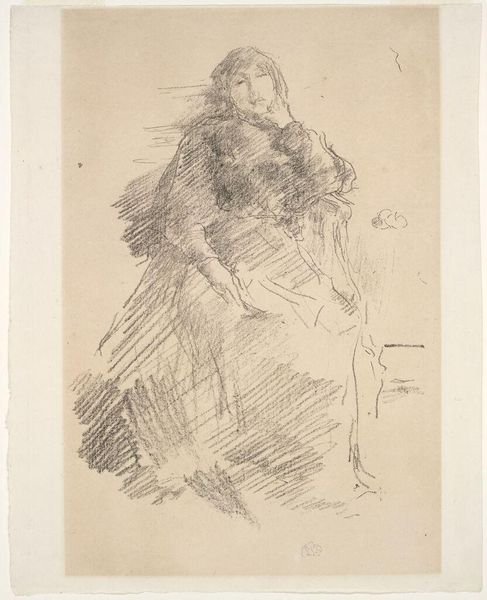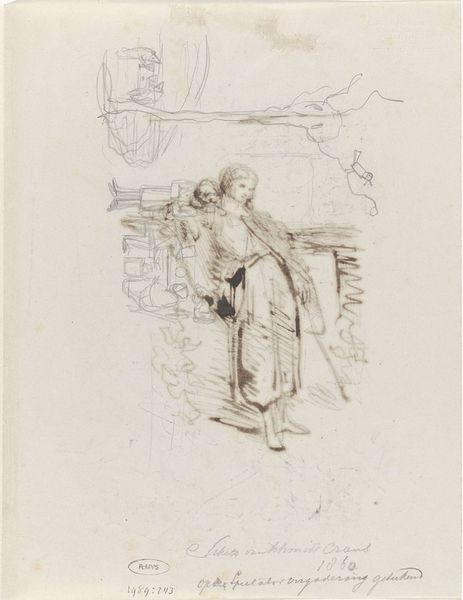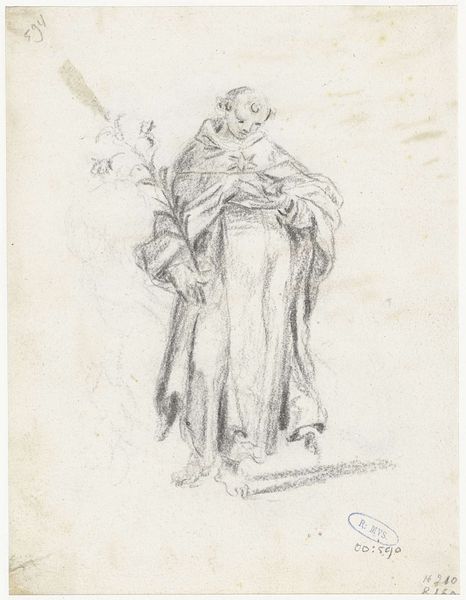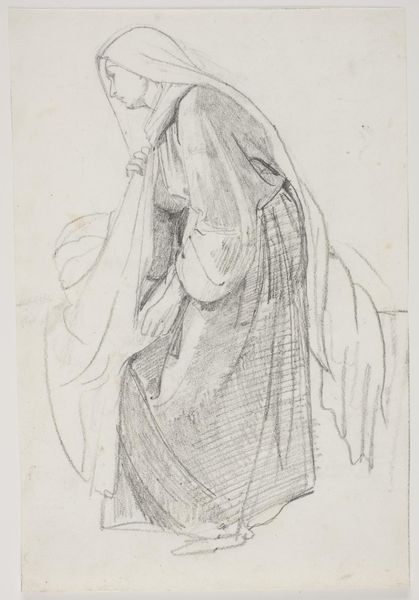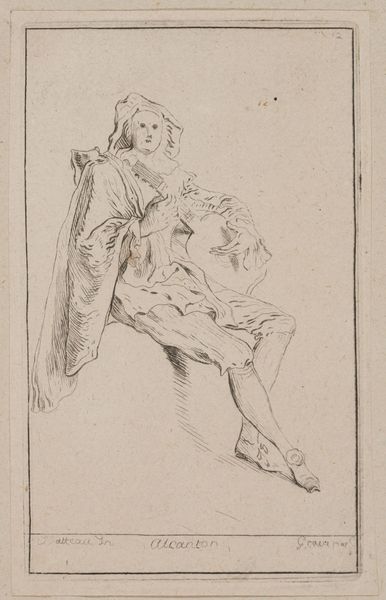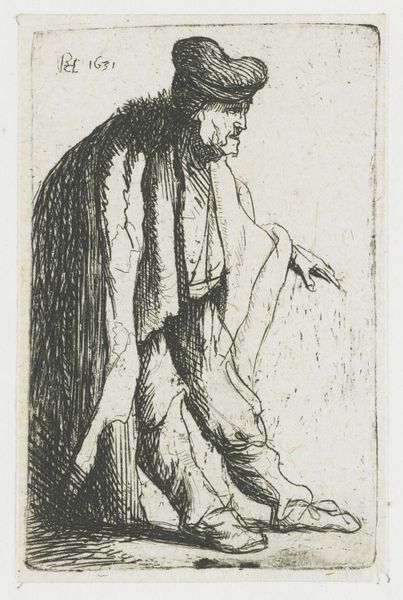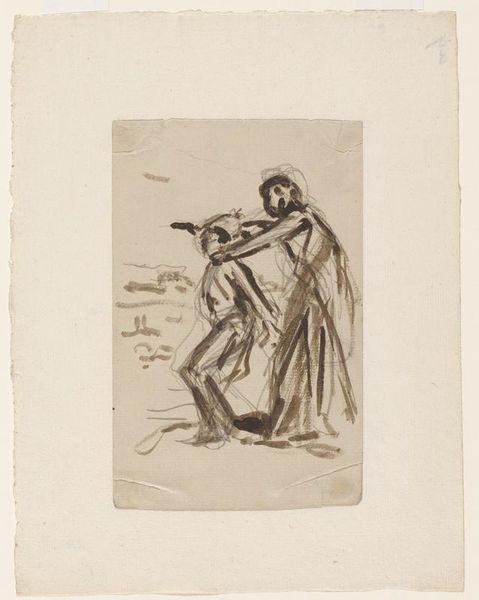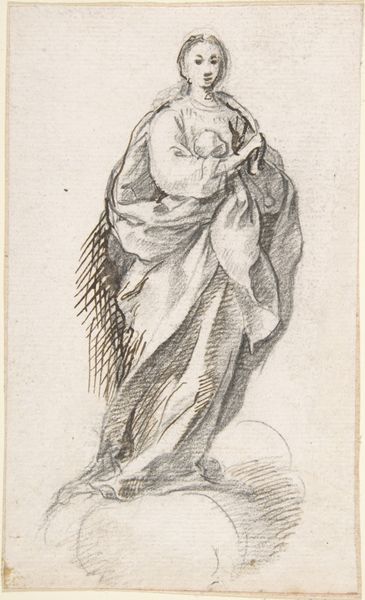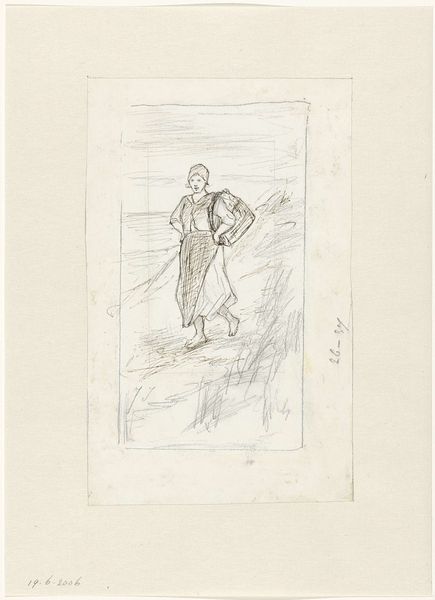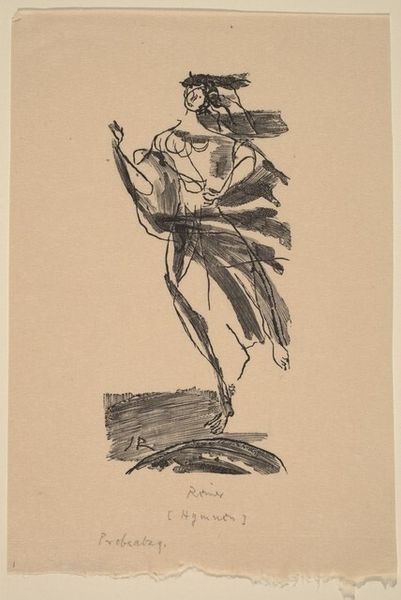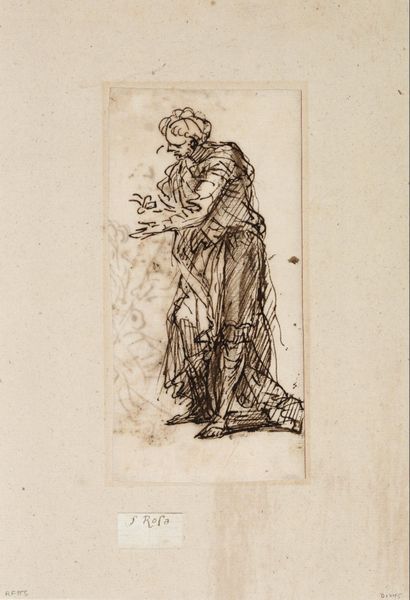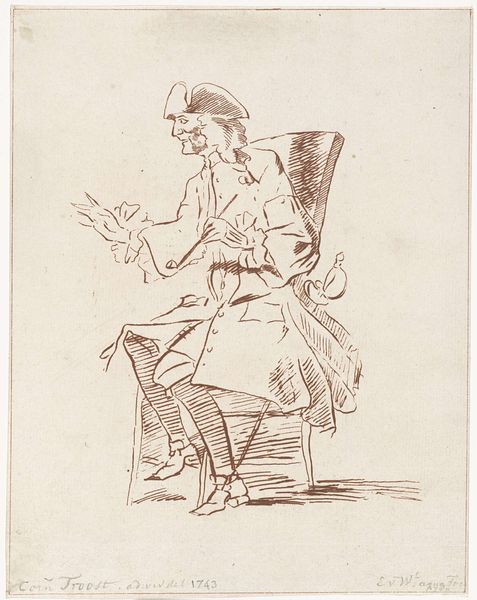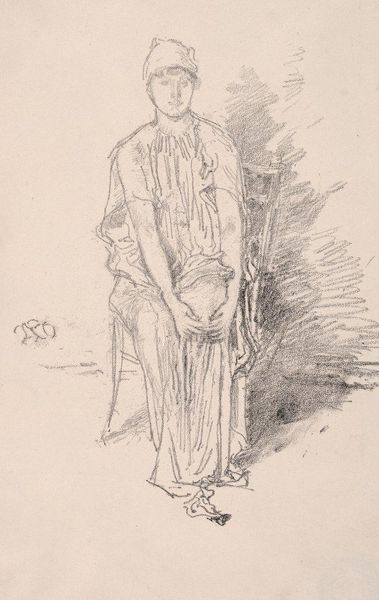
drawing, ink, pen
#
portrait
#
drawing
#
light pencil work
#
quirky sketch
#
pencil sketch
#
incomplete sketchy
#
figuration
#
personal sketchbook
#
ink
#
pen-ink sketch
#
sketchbook drawing
#
pen
#
pencil work
#
fantasy sketch
#
realism
#
initial sketch
Dimensions: height 275 mm, width 213 mm
Copyright: Rijks Museum: Open Domain
Curator: Here we have Johan Michael Schmidt Crans' drawing, "Herderin," believed to have been made sometime between 1840 and 1907. The work employs both pen and ink in what seems to be a spontaneous sketch. What do you make of it initially? Editor: There’s something really touching about this… It feels so immediate, almost vulnerable. The woman with her crook, the child nestled against her, all rendered in these fleeting, scribbled lines. There’s a softness despite the starkness. Curator: It's fascinating how the limited materials, just pen and ink on paper, create such a textured and suggestive image. The varying line weights definitely indicate a real emphasis in this kind of art creation to the materials themselves, how they react with paper and how they create the shapes we see. One cannot miss to focus here the artist's labor as part of what builds this art, it wasn't just talent but repetitive attempts to mastery. Editor: Exactly! And the incompleteness, the suggestive strokes, almost invite you to finish the drawing in your mind. It's like a whisper of a moment rather than a declarative statement. I imagine Crans, capturing this fleeting scene directly from life into his personal sketchbook, on his everyday. Curator: The "everydayness" speaks to the work's accessibility. Consider the social context. "Herderin" translates to "Shepherdess." We're seeing a working-class woman, her labor represented, rather than some idealized allegorical figure. I do consider it important to see that the theme is figuration; also, given this is an ink sketch, perhaps some initial work for further elaborations into another materials, more expensive and more considered high art. Editor: Yes, and there's an incredible intimacy too. The child's trusting pose against the woman feels so tender, but again the looseness and the sketchy elements make me think the child is not real, like taken out of an imaginary fantasy and put on the sketchbook right next to the 'real' shepherdess! I'm really curious to think of her thoughts... Does this drawing feel timeless, wouldn’t you say? Curator: It does transcend its time. The sketch form feels both raw and intentional. Focusing on materials, process and its subject rooted in labor certainly deepens the reading for me. It connects to broader issues around representation. Editor: I'll hold that intimate and timeless sensation from the 'quirky sketch,' as well as an urge to draw along. Thanks for this interesting walk!
Comments
No comments
Be the first to comment and join the conversation on the ultimate creative platform.
